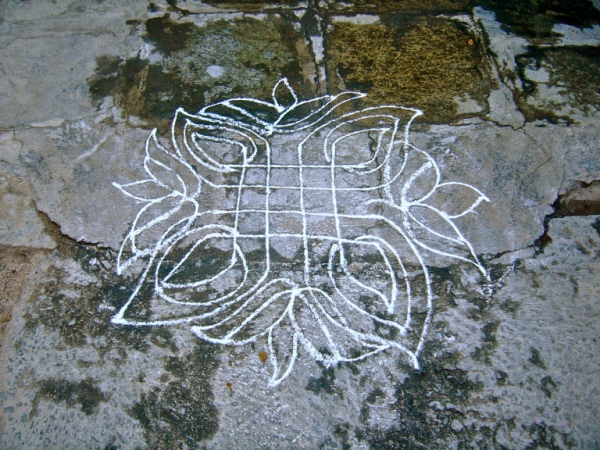
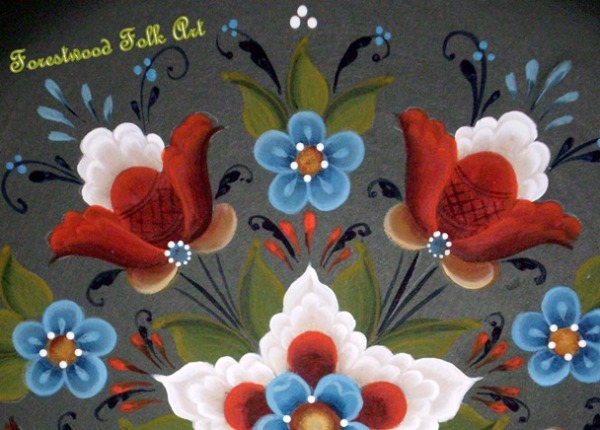
No matter where you travel, in the world, within each region you will find examples of innovative forms of folk art. These are not completed by the skilled artisan, but rather by the common person, often with little training and few tools, simply decorating their homes and surrounds. Historically, an itinerant artist might travel from town to town this way, painting as he went, eeking out a meagre existence through the doors of time.
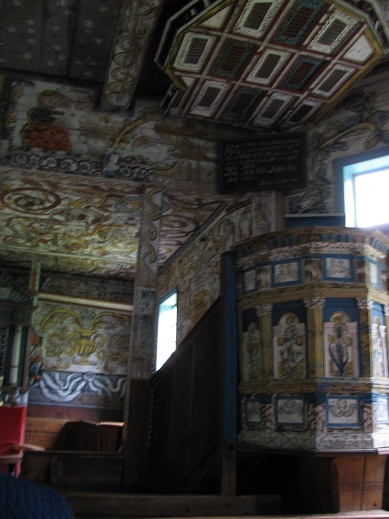
Rosemaling is often seen in Churches in Norway

Rangoli is a traditional women’s art form common in Hindu households throughout southern India. Designs are drawn directly in white chalk,on the ground, at the house entranceway, by the women of the household, as part of a ritualistic religious practice.
My primary interest is in Norwegian and old Hansa traditional art forms, such as Rosemaling, the Danish Almuemaling, and the Dutch Hindeloopen, styles of painting that ordinary folk used to decorate their homes during the dark cold days of winter when they could not go outside to work.
I find the differnt forms of these old art styles dynamic. They feel alive and have a historic connection to a way of life long past, but still valued.
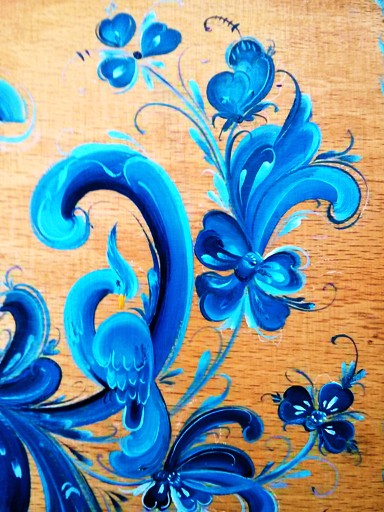
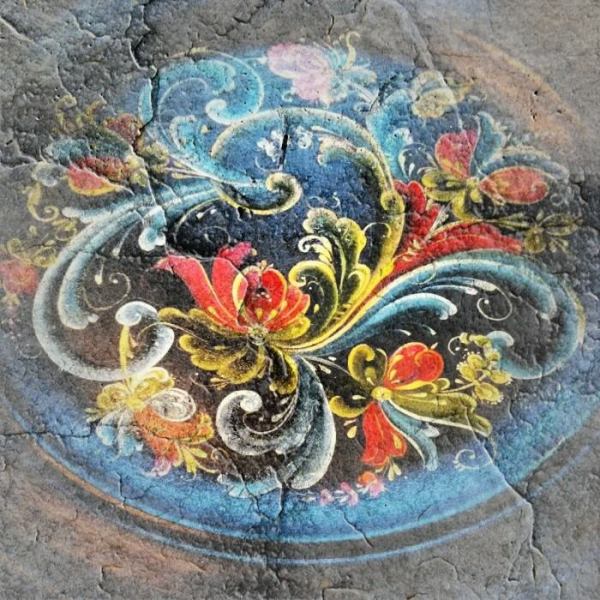 Rosemaling
RosemalingIn many forms of folk art, religion symbolism is rife, and the tulip is a common feature. Once the Tulip meant the Holy trinity, something inherent in many different religions and I guess this is the reason we see it represented in art in the East as well as the West.
The following link displays border designs in South India – Take a look. How often do you see the Tulip form?
Something Inspirational to Ponder About


I love your interest in rosemaling, Amanda – AND your production of examples !
Knew nothing about rangoli, and it’s fascinating. But not as lovely as the rosemaling …
LikeLiked by 1 person
Thank you, Rinnovata, neither Rangoli nor Rosemaling is not something a lot of people are aware of, unless you are of Scandinavian or southern Indian ancestry. Thanks for leaving such a thoughtful comment!
LikeLiked by 1 person
Oh, you know me … hmmmm; no, you don’t, not under this pseu-de-plume. [grin]
LikeLike
We do know La Lasciata, don’t we?
LikeLiked by 1 person
I hope so.
🙂
LikeLiked by 1 person
😉
LikeLike